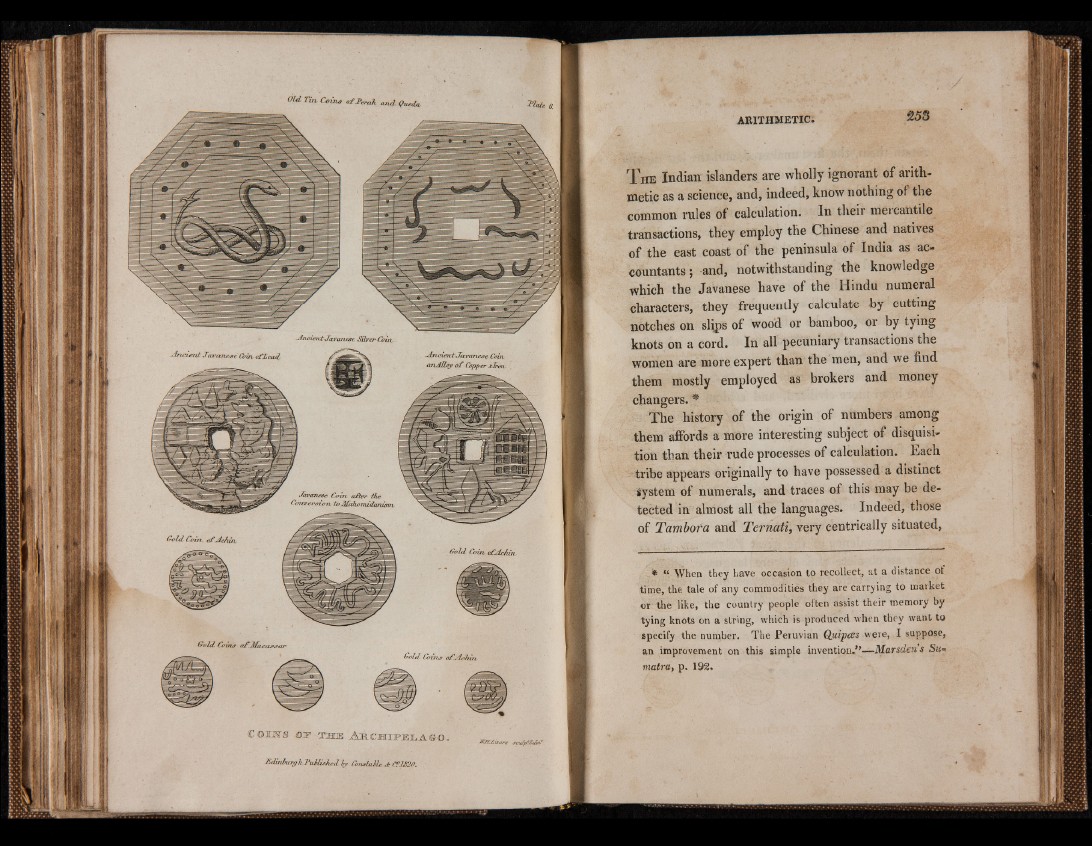
o f P e ra k a n d Qaeda,
fn c ie n t J a v a n e se SH ver C o in ,
4 n a e n t Ja v a n e se Coin, o f L ead , -A n c ie n t J a v a n e s e C oin,
ajiA T L oy o f C opper ¿Jnrrv
J a v a n ese C o in , a fte r H ie
o n v e rsu m , tô J ifa h n m id c a iism ,
G old. Coin, o fd c h in .
G o ld C o rn s o f 'J lftic a s s c c r
C o i f s oof t h e A e c m i e e l a c c k
T.Jmkurcj h l’ullithciL fy Constable * CŸ1S20.
T he Indian islanders are wholly ignorant of arithmetic
as a science, and, indeed, know nothing of the
common rules of calculation. In their mercantile
transactions, they employ the Chinese and natives
of the east coast of the peninsula of India as accountants
; and, notwithstanding the knowledge
which the Javanese have of the Hindu numeral
characters, they frequently calculate by cutting
notches on slips of wood or bamboo, or by tying
knots on a cord. In all pecuniary transactions the
women are more expert than the men, and we find
them mostly employed as brokers and money
changers. *
The history of the origin of numbers among
them affords a more interesting subject of disquisition
than their rude processes of calculation. Each
tribe appears originally to have possessed a distinct
system of numerals, and traces of this may be detected
in almost all the languages. Indeed, those
of Tambofa and Ternati, very centrieally situated,
* “ When they have occasion to recollect, at a distance ot
time, the tale of any commodities they are carrying to market
or the like, the country people often assist their memory by
tying knots on a string, which is produced when they want to
specify the number. The Peruvian Quipces were, I suppose,
an improvement on this simple invention.’’—Marsdens Su-i
matra, p. 192.